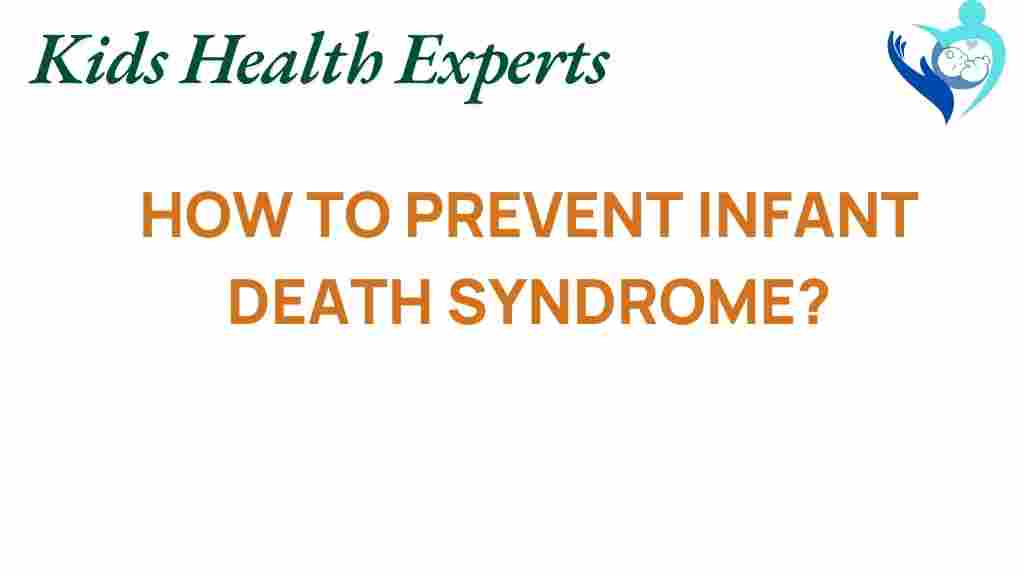Unraveling the Mystery: How to Prevent Infant Death Syndrome
Infant Death Syndrome, commonly known as Sudden Infant Death Syndrome (SIDS), is a heartbreaking phenomenon that affects families across the globe. While the exact causes of SIDS remain a mystery, significant research has led to effective prevention strategies that every parent should be aware of. In this article, we will explore essential parenting tips, health guidelines, and the best practices for creating a safe sleep environment for infants. By understanding the risk factors and raising SIDS awareness, we can help protect our little ones and reduce the incidence of this devastating condition.
Understanding Infant Death Syndrome
Infant Death Syndrome refers to the sudden and unexplained death of an otherwise healthy baby, usually during sleep. Most cases occur in infants between one month and one year old, with the highest incidence between two and four months. While the cause of SIDS is still unknown, research has identified several risk factors that can contribute to its occurrence.
Risk Factors for SIDS
Understanding the risk factors associated with SIDS is crucial for prevention. Here are the primary risk factors to be aware of:
- Sleep Position: Babies placed on their stomachs or sides are at an increased risk.
- Sleep Environment: Soft bedding, loose blankets, and toys in the crib can pose risks.
- Parental Smoking: Exposure to cigarette smoke, either during pregnancy or after birth, increases the risk.
- Premature Birth: Babies born prematurely or with low birth weight are more vulnerable.
- Parental Age: Younger mothers (under 20) are more likely to have infants at risk for SIDS.
- Family History: A history of SIDS in the family can increase risk.
Creating a Safe Sleep Environment
One of the most effective ways to prevent infant death syndrome is by creating a safe sleep environment. Here are several guidelines to follow:
- Place Baby on Their Back: Always lay your baby down on their back for every sleep time, including naps.
- Use a Firm Mattress: Ensure the crib or bassinet has a firm mattress with a fitted sheet. Avoid soft mattresses and bedding.
- Keep the Crib Clear: Remove pillows, blankets, toys, and bumper pads from the crib to reduce suffocation risks.
- Room Sharing: Consider room-sharing without bed-sharing. Keep the crib or bassinet in your room for the first six months to a year.
- Maintain a Comfortable Temperature: Dress your baby in light sleep clothing and avoid overheating. The room should be at a comfortable temperature.
- Use a Pacifier: Offering a pacifier at nap time and bedtime may reduce the risk of SIDS.
Essential Parenting Tips for SIDS Prevention
In addition to creating a safe sleep environment, parents can take several proactive steps to reduce the risk of SIDS:
- Regular Pediatric Check-ups: Schedule regular visits with your pediatrician to monitor your baby’s health and development.
- Stay Informed: Keep up with the latest SIDS research and guidelines by visiting reputable sources like the National Institute of Child Health and Human Development.
- Encourage Healthy Habits: Promote a smoke-free environment and encourage breastfeeding, which may help reduce SIDS risk.
- Educate Caregivers: Ensure that anyone who cares for your baby is aware of safe sleep practices.
- Be Observant: Keep an eye on your baby’s sleep patterns and seek medical advice if you notice any irregularities.
Understanding the Role of Health Guidelines
Health guidelines play a crucial role in preventing infant death syndrome. Organizations such as the American Academy of Pediatrics (AAP) provide evidence-based recommendations to help parents and caregivers make informed decisions about infant care. Adhering to these guidelines can significantly reduce the risk of SIDS.
Step-by-Step Process for Safe Sleep Practices
Implementing safe sleep practices can be straightforward. Here’s a step-by-step guide:
- Prepare the Sleep Environment: Choose a safe crib or bassinet that meets current safety standards.
- Follow Safe Sleep Guidelines: Always place your baby on their back, use a firm mattress, and keep the sleep area free from soft objects.
- Monitor Sleep Temperature: Dress your baby appropriately for the room temperature—avoid overheating.
- Encourage Room Sharing: Consider having your baby sleep in your room for at least the first six months.
- Educate Others: Share safe sleep information with family and caregivers to ensure everyone is on board.
Troubleshooting Tips for Common Concerns
Parents may encounter various concerns related to their infant’s sleep. Here are some troubleshooting tips:
- My Baby Sleeps on Their Stomach: If your baby prefers sleeping on their stomach, gently reposition them onto their back and consult your pediatrician if concerned.
- Baby Gets Cold at Night: If your baby feels cold, consider using a sleep sack instead of loose blankets.
- Caregiver Disagreement: Discuss safe sleep practices openly with family members who may have different beliefs. Share evidence-based resources to explain your stance.
Promoting SIDS Awareness
Raising awareness about SIDS is vital for prevention. Communities can help by:
- Organizing educational workshops for new parents.
- Distributing materials that outline safe sleep practices.
- Engaging healthcare providers to disseminate information during pediatric visits.
By promoting SIDS awareness, we can foster a culture of safety and support for new parents.
Conclusion: The Importance of Vigilance in SIDS Prevention
Infant death syndrome remains a tragic and distressing reality for many families. However, by understanding the risk factors, adhering to health guidelines, and creating a safe sleep environment, we can significantly reduce the likelihood of SIDS occurring. Parenting is filled with challenges, but by implementing these prevention strategies, parents can ensure that their little ones are as safe as possible during sleep. Remember, staying informed and vigilant is key to safeguarding your infant’s health. For more resources on infant safety, visit this helpful site for additional information and support.
This article is in the category Care and created by KidsHealthExperts Team
